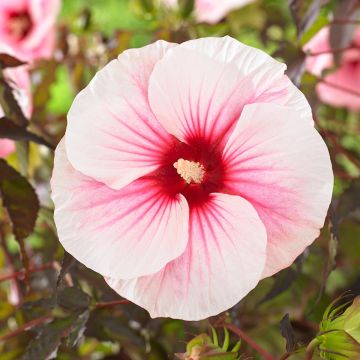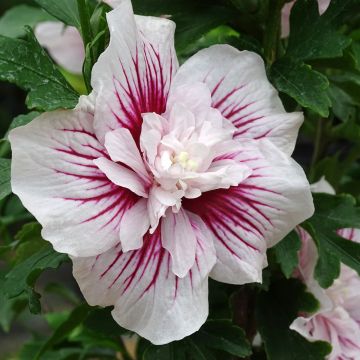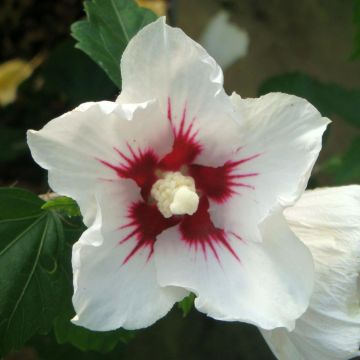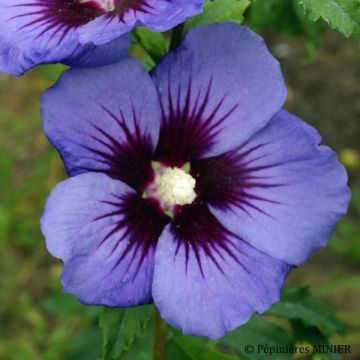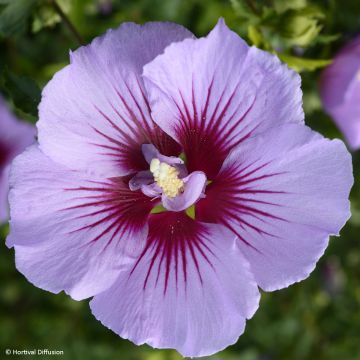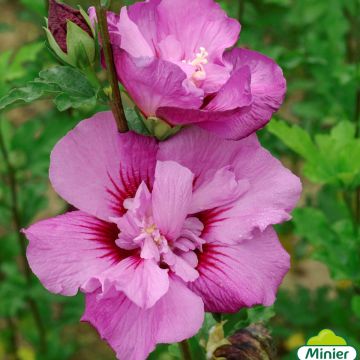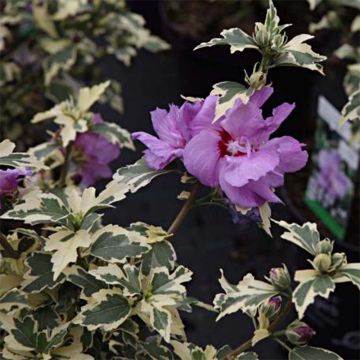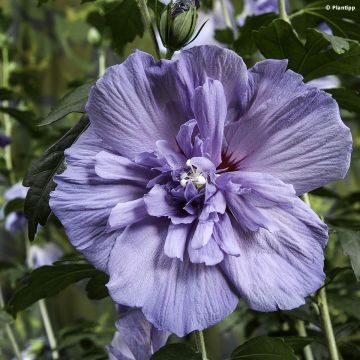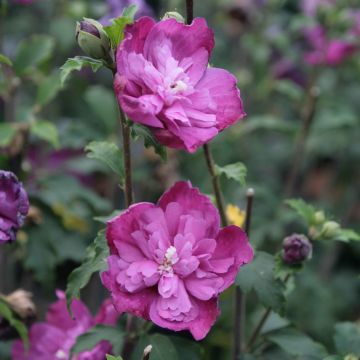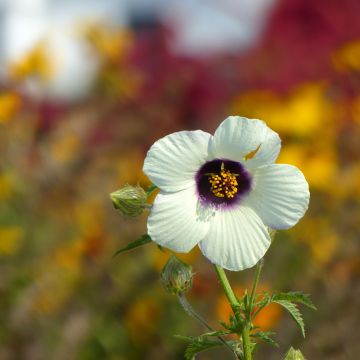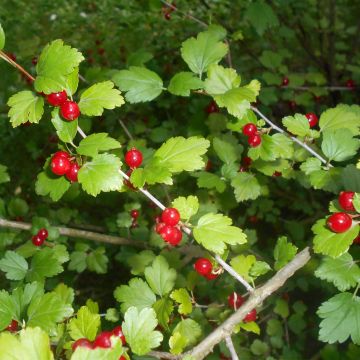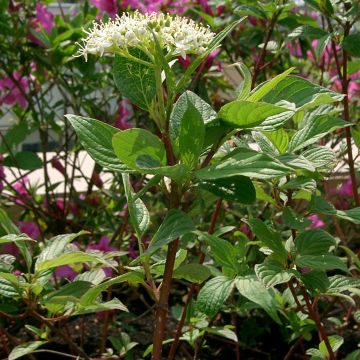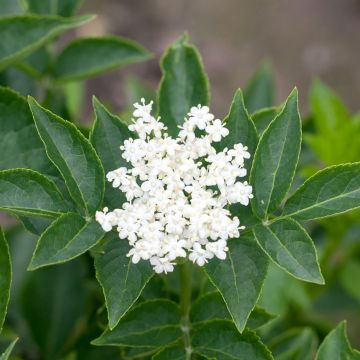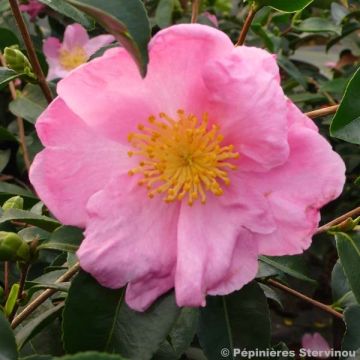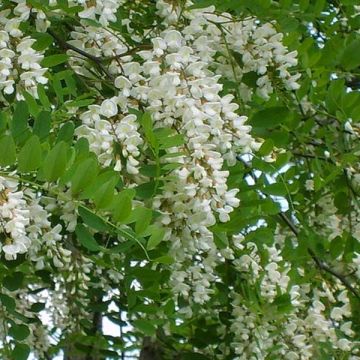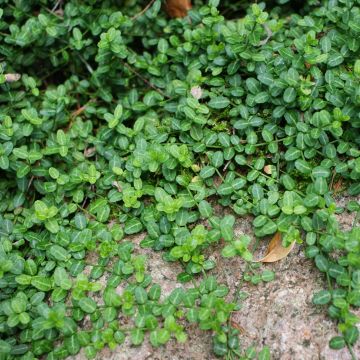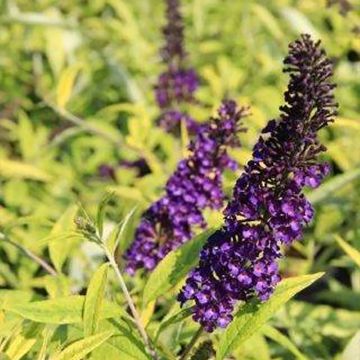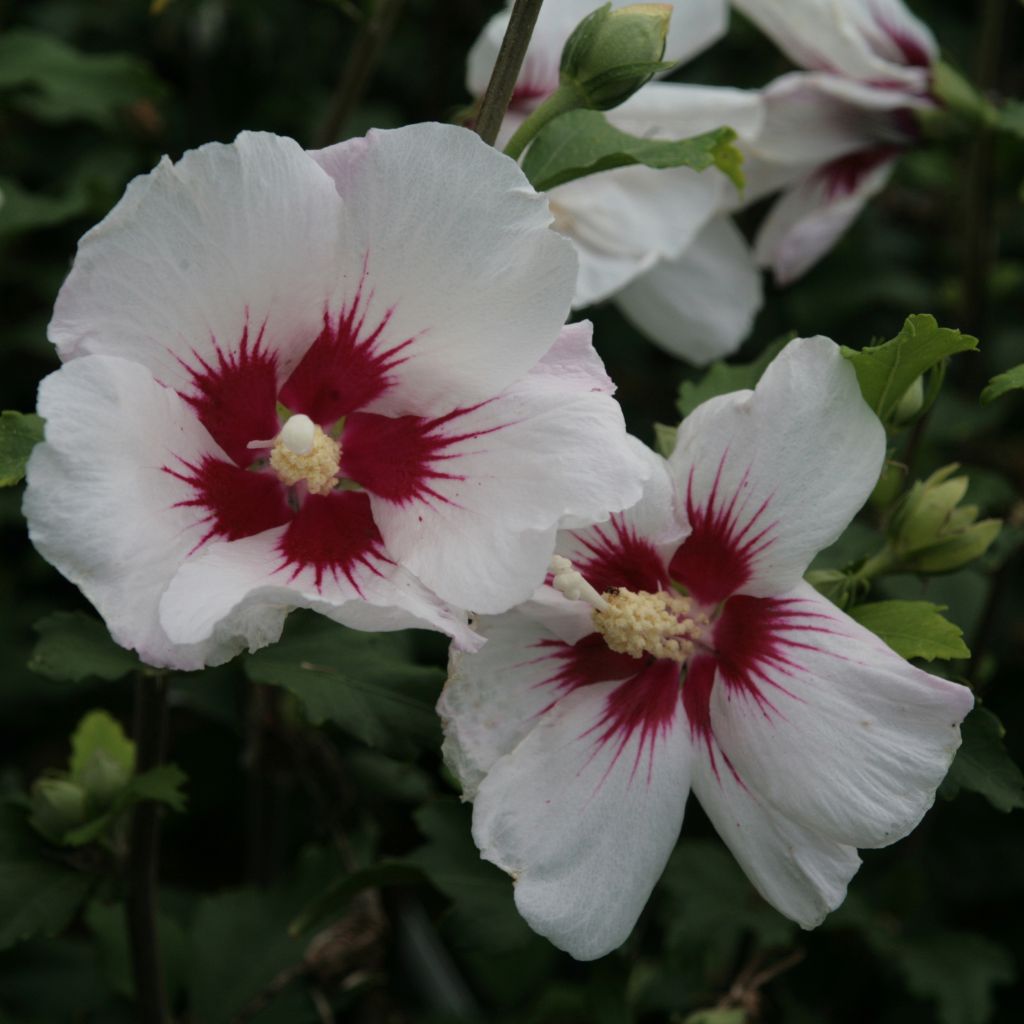

Hibiscus syriacus Shintaeyang - Rose of Sharon
Hibiscus syriacus Shintaeyang - Rose of Sharon
Hibiscus syriacus Shintaeyang
Common Hibiscus, Rose of Sharon, Syrian ketmia, St Joseph's rod, Garden Hibiscus
This item cannot be shipped to the selected country
Delivery charge from €5.90
Delivery charge from €5.90
Delivery to Corse prohibited
More information
Schedule delivery date,
and select date in basket
This plant carries a 24 months recovery warranty
More information
We guarantee the quality of our plants for a full growing cycle, and will replace at our expense any plant that fails to recover under normal climatic and planting conditions.
From €5.90 for pickup delivery and €6.90 for home delivery
Express home delivery from €8.90.
From €5.90 for pickup delivery and €6.90 for home delivery
Express home delivery from €8.90.
Delivery to Corse prohibited: UE law prohibits the import of this plant from mainland France to Corse as part of the fight against Xylella fastidiosa. Please accept our sincere apologies.
More information

Does this plant fit my garden?
Set up your Plantfit profile →
Description
Hibiscus syriacus 'Shintaeyang', also known as Tree Mallow or Althaea, has a charm with tropical accents. Its single, bicoloured flower displays pure white petals, with a cherry-red splashed base that extends into short filaments. Enchanting, this deciduous shrub produces large flowers throughout the summer, similar to hollyhocks, that are short-lived but constantly renewed. A bit stiff in its youth, this variety becomes more bushy over time and forms a fabulous, very floriferous shrub. Whether in a flowering hedge, flower bed, or large container near the house, it is easy to grow in the sun and adapts to any well-drained, ordinary or even slightly chalky soil.
Hibiscus syriacus, sometimes called Rose Mallow, is a hardy shrub, deciduous in colder climates but evergreen in warm climates, belonging to the Malvaceae family, just like hollyhocks and marsh mallows. It is native to temperate regions of Asia and has given rise to numerous cultivars, including the 'Shintaeyang' variety, which stands out for its upright growth and abundant flowering from August to October. It is a shrub that reaches a height of 2 to 3 m (6 ft 7 in to 9 ft 10 in) and a spread of 1.5 to 2 m (4 ft 11 in to 6 ft 7 in), with an upright habit supported by an erect branching system and fairly slow growth. It produces large, single corollas in vibrant and contrasting white and red colours, surrounding a large central column of fused white stamens. Its foliage forms a beautiful dark background, of slightly glossy dark green. The leaves are alternate, lobed, and ovate to lanceolate, with dentate and undulate margins.
Rose Mallows have the advantage of flowering abundantly at a time when few shrubs are in bloom in the garden, in almost all soils and climates. 'Shintaeyang' Althaea thrives in bright, warm exposures. This hibiscus requires little maintenance and grows slowly but steadily. Plant it in a sheltered location away from strong winds, in a soil that remains slightly moist until the end of summer. This highly colourful but uncommon variety in our gardens can be used as a medium-sized hedge, in combination with other hibiscus varieties of different colours, or buddleias and abelias, as well as in isolation or at the back of a perennial flower bed composed of asters, phlox, daylilies, gauras, or shrubby mallows, for example.
Report an error about the product description
Hibiscus syriacus Shintaeyang - Rose of Sharon in pictures
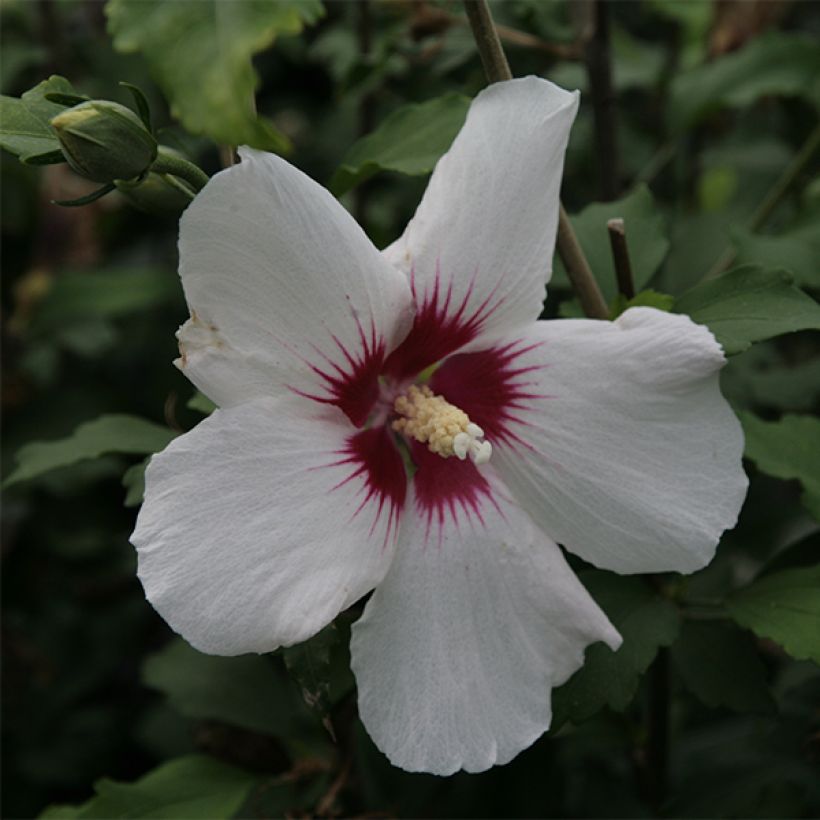

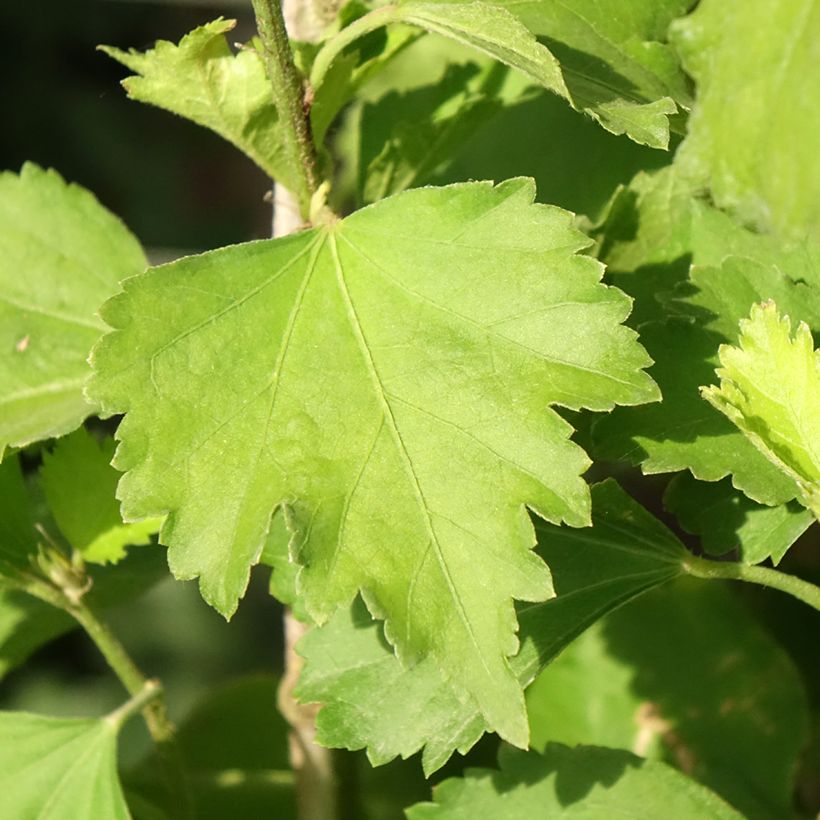

Plant habit
Flowering
Foliage
Botanical data
Hibiscus
syriacus
Shintaeyang
Malvaceae
Common Hibiscus, Rose of Sharon, Syrian ketmia, St Joseph's rod, Garden Hibiscus
Cultivar or hybrid
Other Hibiscus
Planting and care
Plant Hibiscus syriacus in spring or autumn, in a sunny position and in a well-drained, loose, but fertile soil. Dig a nice deep planting hole, add some compost and sand to your garden soil to improve soil quality if necessary. Water thoroughly after planting. Don't worry if the vegetation doesn't start before May: it's completely normal for this shrub.
While althaeas tolerate heat and occasionally dry soils, they are more beautiful and more floriferous in a soil that retains moisture in summer. Mulch the base of these shrubs if needed.
Planting period
Intended location
Care
-
, onOrder confirmed
Reply from on Promesse de fleurs
Hedge shrubs
Haven't found what you were looking for?
Hardiness is the lowest winter temperature a plant can endure without suffering serious damage or even dying. However, hardiness is affected by location (a sheltered area, such as a patio), protection (winter cover) and soil type (hardiness is improved by well-drained soil).

Photo Sharing Terms & Conditions
In order to encourage gardeners to interact and share their experiences, Promesse de fleurs offers various media enabling content to be uploaded onto its Site - in particular via the ‘Photo sharing’ module.
The User agrees to refrain from:
- Posting any content that is illegal, prejudicial, insulting, racist, inciteful to hatred, revisionist, contrary to public decency, that infringes on privacy or on the privacy rights of third parties, in particular the publicity rights of persons and goods, intellectual property rights, or the right to privacy.
- Submitting content on behalf of a third party;
- Impersonate the identity of a third party and/or publish any personal information about a third party;
In general, the User undertakes to refrain from any unethical behaviour.
All Content (in particular text, comments, files, images, photos, videos, creative works, etc.), which may be subject to property or intellectual property rights, image or other private rights, shall remain the property of the User, subject to the limited rights granted by the terms of the licence granted by Promesse de fleurs as stated below. Users are at liberty to publish or not to publish such Content on the Site, notably via the ‘Photo Sharing’ facility, and accept that this Content shall be made public and freely accessible, notably on the Internet.
Users further acknowledge, undertake to have ,and guarantee that they hold all necessary rights and permissions to publish such material on the Site, in particular with regard to the legislation in force pertaining to any privacy, property, intellectual property, image, or contractual rights, or rights of any other nature. By publishing such Content on the Site, Users acknowledge accepting full liability as publishers of the Content within the meaning of the law, and grant Promesse de fleurs, free of charge, an inclusive, worldwide licence for the said Content for the entire duration of its publication, including all reproduction, representation, up/downloading, displaying, performing, transmission, and storage rights.
Users also grant permission for their name to be linked to the Content and accept that this link may not always be made available.
By engaging in posting material, Users consent to their Content becoming automatically accessible on the Internet, in particular on other sites and/or blogs and/or web pages of the Promesse de fleurs site, including in particular social pages and the Promesse de fleurs catalogue.
Users may secure the removal of entrusted content free of charge by issuing a simple request via our contact form.
The flowering period indicated on our website applies to countries and regions located in USDA zone 8 (France, the United Kingdom, Ireland, the Netherlands, etc.)
It will vary according to where you live:
- In zones 9 to 10 (Italy, Spain, Greece, etc.), flowering will occur about 2 to 4 weeks earlier.
- In zones 6 to 7 (Germany, Poland, Slovenia, and lower mountainous regions), flowering will be delayed by 2 to 3 weeks.
- In zone 5 (Central Europe, Scandinavia), blooming will be delayed by 3 to 5 weeks.
In temperate climates, pruning of spring-flowering shrubs (forsythia, spireas, etc.) should be done just after flowering.
Pruning of summer-flowering shrubs (Indian Lilac, Perovskia, etc.) can be done in winter or spring.
In cold regions as well as with frost-sensitive plants, avoid pruning too early when severe frosts may still occur.
The planting period indicated on our website applies to countries and regions located in USDA zone 8 (France, United Kingdom, Ireland, Netherlands).
It will vary according to where you live:
- In Mediterranean zones (Marseille, Madrid, Milan, etc.), autumn and winter are the best planting periods.
- In continental zones (Strasbourg, Munich, Vienna, etc.), delay planting by 2 to 3 weeks in spring and bring it forward by 2 to 4 weeks in autumn.
- In mountainous regions (the Alps, Pyrenees, Carpathians, etc.), it is best to plant in late spring (May-June) or late summer (August-September).
The harvesting period indicated on our website applies to countries and regions in USDA zone 8 (France, England, Ireland, the Netherlands).
In colder areas (Scandinavia, Poland, Austria...) fruit and vegetable harvests are likely to be delayed by 3-4 weeks.
In warmer areas (Italy, Spain, Greece, etc.), harvesting will probably take place earlier, depending on weather conditions.
The sowing periods indicated on our website apply to countries and regions within USDA Zone 8 (France, UK, Ireland, Netherlands).
In colder areas (Scandinavia, Poland, Austria...), delay any outdoor sowing by 3-4 weeks, or sow under glass.
In warmer climes (Italy, Spain, Greece, etc.), bring outdoor sowing forward by a few weeks.

































